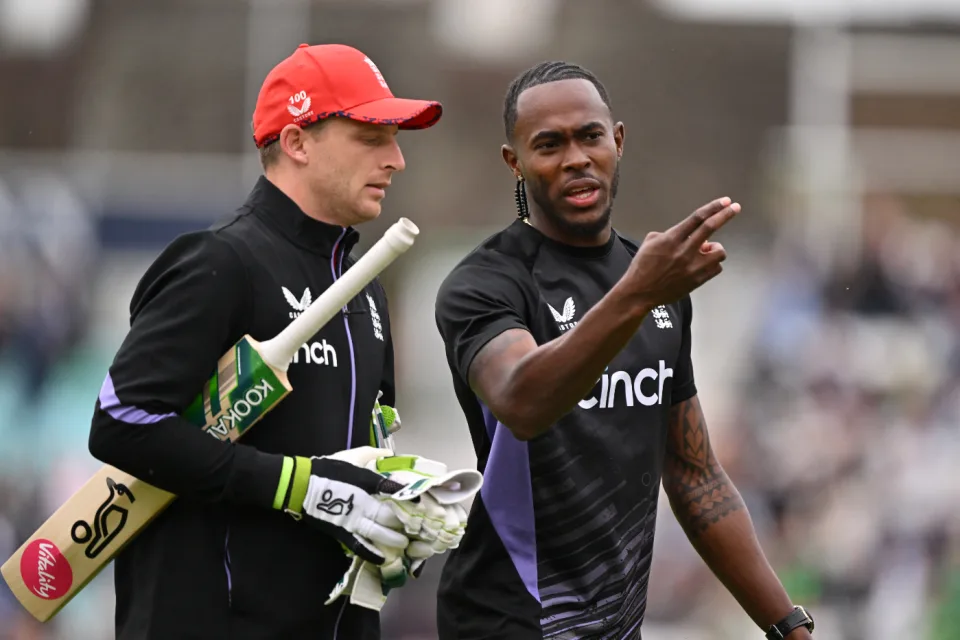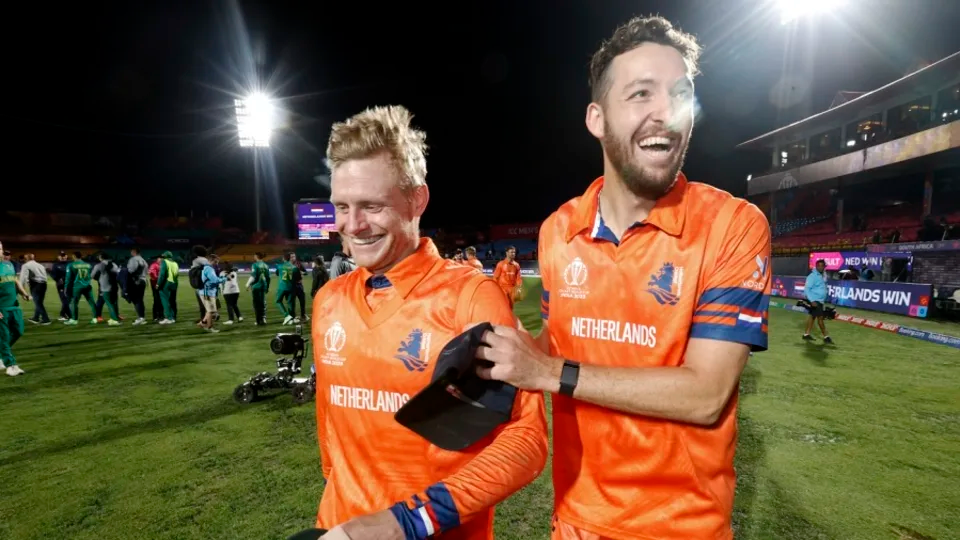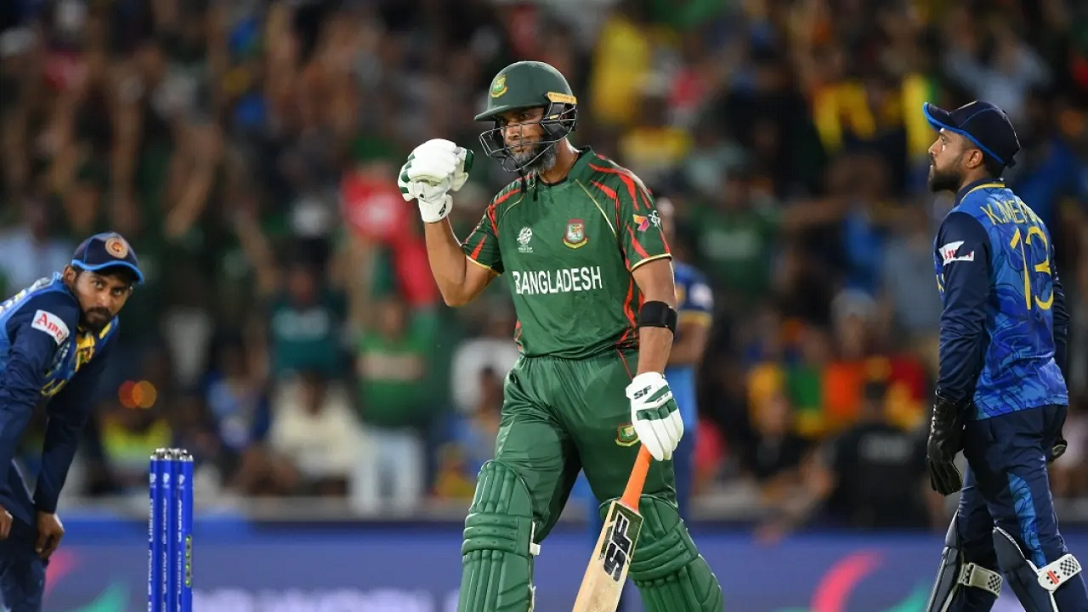Sports
World Cup 2022: Vittorio Pozzo’s legacy and a record that might finally be under threat

When Didier Deschamps leads his France side out to face England in their World Cup quarter-final on Saturday, he will be hoping to take a further big step towards becoming only the second manager to retain the trophy. Just two nations have managed to win back-to-back men’s World Cups, Italy in 1934 and 1938 and Brazil in 1958 and 1962, but with the Selecao job changing hands between successes, former Azzurri coach Vittorio Pozzo stands alone.
Nicknamed Il Vecchio Maestro (the Old Master) in coaching circles, Pozzo was considered a visionary of the time and is credited as one of the minds behind the Metodo formation, the earliest example of the 4-3-3 we recognise today.Yet far from being revered as the only manager to win the men’s World Cup twice, Pozzo remains relatively little known. And there is a reason for that.
“It’s deliberate that few people know who he is,” says historian Dr Alex Alexandrou, the chair and co-founder of the Football and War network.
“If you think about post-1945 Italy, and how Fifa and the Italian Football Federation project and promote themselves, the one thing they didn’t want to do was give credence to Pozzo and what happened during the 1930s, because there is a significant link with the far right and fascism.”
Despite Pozzo first taking charge of the national team for the 1912 Olympics – before fascists rose to power in Italy – and never being a member of the National Fascist Party, his story is inextricably linked to the far right movement that culminated in Benito Mussolini’s dictatorship.
The four stars proudly emblazoned on Italy’s national team shirt to symbolise their quartet of World Cup wins acknowledge the victories of 1934 and 1938, but there’s still some unease around them.
“There’s this slight sort of smell, if you like, after the war, and Pozzo isn’t as famous or exulted as he might be because he won his trophies under a fascist regime,” explains Italian football expert John Foot in his new book How to Win the World Cup.
“He wasn’t forced to do that; he participated in that. The players gave the fascist salute and there was a lot of rhetoric around them, so it’s a problem in terms of Italy. Do those World Cups even count?”
Sport historian Prof Jean Williams adds: “A lot of people describe Pozzo as capitulating to the regime – he goes along with it rather than standing up to it.
“Unless you were going to leave the country, it was very difficult to avoid, in the same way that a lot of young men would have become part of the Hitler Youth [in Nazi Germany] because it was essentially their version of the boy scouts.”
Dr Alexandrou agrees: “I don’t think Pozzo had much time for politics per se or even for the fascists, but he loved his football and he had to survive in that regime. He did what he felt he had to do in order to do the job he wanted to do, which was to manage.”
Mussolini’s fascist government had quickly identified the value of a strong association with football after seizing power in 1922 and its involvement with Italy’s national game deepened as the country became a dictatorship.
Money was poured into the sport in search of the best possible chance of success on the international stage, with Serie A reorganised in 1929 to create stronger competition and help develop players that could compete at the top level. Militia general Giorgio Vaccaro was installed as the head of the Italian Football Federation. But when it came to the national team, Pozzo was the poster boy.
Italy were World Cup hosts in 1934. The country’s rulers considered it crucial that they win, thereby reaffirming fascism’s strong nationalist values and conveying the image of a modern and assertive nation to the rest of the globe.Although a combination of Pozzo’s tactical approach and a partisan home crowd would help Italy’s chances of glory, there were also rumours of foul play – with Mussolini allegedly meeting with tournament referees the night before key matches.
Although no corruption was ever proved, opponents complained of officials’ leniency towards the Azzurri’s physicality. Swiss referee Rene Mercet was even suspended by his own football association following claims he made several controversial decisions as Italy squeezed past Spain in a heated quarter-final replay.
Despite the accusations, there was no doubt Pozzo’s tactical ingenuity had an impact. The Italians conceded only three times in five matches – particularly impressive given the comparatively free-scoring nature of the time. The coach’s preference for playing with four defenders and a holding midfielder gave them a stronger footing in the face of the popular 2-3-5 formation. (BBC Sports)
“We start to see the beginnings of the catenaccio defence where the centre-half is a kind of stopper,” Williams explains.
“Under Pozzo, instead of a centre-half being the one that spread the ball around, the midfield became more important, with a holding midfielder and an attacking midfielder, or inside rights and lefts, as they were called in those days.”
Pozzo can in another sense be seen as a forefather to the modern international manager in his insistence on having full control over team selection. Previously many national sides were chosen by appointed committees, but Pozzo said the best chance of success was for the coach to take responsibility – something Sir Alf Ramsey also did upon becoming England manager in 1963.
This meant Pozzo could call upon the oriundi, a term used to describe foreign-born people with Italian descent, to bolster his side’s ranks. Within that diaspora, he called up Luis Monti, who had played in the 1930 World Cup final for Argentina, and Raimundo Orsi, another former Argentina player who would score for Italy in the 1934 final, a 2-1 victory over Czechoslovakia.
This wasn’t universally popular among the fascist regime, but the prospect of forming a stronger national side tipped the debate in Pozzo’s favour. His new-look side were well organised, treated matches like battles and would stop at nothing to win. Training camps were punctuated with strong nationalistic messages and the squad treated almost as if they were soldiers, with exercises such as marches through the woods commonplace.
Pozzo continued to develop his approach in the ensuing four years, leading Italy to victory at the 1936 Olympics in Berlin and becoming the first manager to win a World Cup on foreign soil in France in 1938.
Facing a vocal anti-Italian crowd in their opening match of the tournament against Norway in Marseille, Pozzo and his players held a fascist salute as an act of defiance and refused to lower their arms until the jeers died down. Upon lowering their salute the noise began again, with Pozzo barking the order to raise their arms once more.
As Italy progressed through the tournament, a quarter-final meeting with hosts France only further dialled up the political tension and a kit clash saw the Azzurri, changed from their usual blue shirts, opting to play in all black rather than their second colour, white, on orders from above.
By now Italy carried a little more creativity to go with their clout, with Giuseppe Meazza growing in influence in the centre of Pozzo’s carefully constructed midfield. The captain was instrumental as the holders dispatched France 3-1; he then scored the winner from the penalty spot against Brazil in the semi-final; and in the final he teed up Luigi Colaussi and Silvio Piola as the forwards scored twice each in a 4-2 win over Hungary.
The significance of a second consecutive World Cup victory wasn’t lost on the fascist government back home, with a myth emerging that Mussolini sent a telegram to the team on the eve of the final saying “win or die”. It’s a detail that has never been confirmed.
But it would prove to be the end of Pozzo’s World Cup story. The outbreak of the World War Two meant the tournament didn’t return until 1950, by which time he had been relieved of his duties and banned from Italian football because of his association with the now-overthrown fascist government.
Pozzo went on to become a well-respected journalist covering the Italian national team for daily newspaper La Stampa, but he would never return to the dugout. He died in December 1968, aged 82.
“Pozzo was obviously a very good leader and very good at mobilising and motivating his teams,” Foot continues in How to Win the World Cup.
“He saw football as war and used national rhetoric around international tournaments. It was like war had been transported onto the pitch.”
(BBC Sports)
Sports
England face Australia in the battle of champions

The first truly heavyweight clash of this expanded T20 World Cup format comes freighted with both history and subplots. A rematch of the 2010 World T20 final at Kensington Oval, the match pits Jos Buttler’s defending champions – who are aiming to become the first team to retain the trophy – against the Australian winning machine, victors at the 2021 edition and current world title-holders in Test and ODI cricket. And that’s before you throw in the Ashes for afters.
Already there is added pressure on England, after the rain in Bridgetown led to a share of the points in their opener against Scotland (and that having conceded 90 runs from 10 overs without taking a wicket in a tepid bowling display). Lose to their oldest rivals and it will leave their Super 8 prospects open to being waylaid by the perils of net run-rate calculations, or worse.
The Scotland match was the third abandonment in five suffered by England, after a rain-affected home series against Pakistan, which has clearly hampered their readiness for this campaign after almost six months without playing T20 together. It does not take much for a side to click in this format – and England looked in decent shape when they did get on the field against Pakistan – but Buttler will be anxious for things to go their way on Saturday, if only to avoid further questions referencing the team’s disastrous ODI World Cup defence last year.
Australia, under the laidback leadership of Mitchell Marsh would love nothing more than to add to the English sense of jeopardy – having helped bundle them out of the tournament in India on the way to taking the crown. Their head to head record is less impressive in T20 however, with England having won six of the last seven completed encounters, as well as that 2010 final.
Despite a wobble with the bat, Australia avoided mishap against Oman earlier in the week, the experience of David Warner and Marcus Stoinis shining through in difficult batting conditions. Surfaces in the Caribbean – not to mention those games staged in the USA – have already had teams scratching their heads; rather than the “slug-fest” England had prepared for, following a high-scoring tour of the Caribbean in December, it looks as if boxing smart may be the way to go.
Speaking of Warner, this could be the last time he faces up against England in national colours – and another match-winning contribution would likely reduce the chances of them meeting again in the knockouts. On the other side of the card is Jofra Archer, fresh from an emotional maiden outing at Kensington Oval and ready to take on Australia for the first time in any format since 2020. Can Mark Wood fire up England’s campaign, as he did during last summer’s Ashes? Will Pat Cummins be back to harass the old enemy once again? Seconds out, it’s almost time to rumble.
Cummins is set to return after being rested for the Oman game, which saw Mitchell Starc leave the field with cramp. Starc is understood to be fine and could keep his place – which would likely see Nathan Ellis miss out. Marsh is still not fit to bowl, with Australia likely to continue with the allrounder combination of Stoinis and Maxwell to give them cover.
Australia (probable XI): David Warner, Travis Head, Mitchell Marsh (capt), Glenn Maxwell, Marcus Stoinis, Josh Inglis (wk), Tim David, Pat Cummins, Nathan Ellis/Mitchell Starc, Adam Zampa, Josh Hazlewood
The one change England may consider is Reece Topley coming in for Wood, with the expectation that there will be some rotation among the seamers through the course of the tournament.
England (probable XI): Phil Salt, Jos Buttler (capt & wk), Will Jacks, Jonny Bairstow, Harry Brook, Liam Livingstone, Moeen Ali, Chris Jordan, Jofra Archer, Adil Rashid, Reece Topley/Mark Wood
[Cricinfo]
Sports
South Africa up against their bogey team in batter-unfriendly New York

Once is coincidence, twice is a clue, and three times is proof.
To paraphrase Agatha Christie, that is the narrative around South Africa’s meeting with Netherlands at this T20 World Cup.
The Dutch beat South Africa at the 2022 tournament and ended their semi-final hopes in a match where South Africa appeared to be sleep walking, and then beat them again at the 2023 ODI World Cup, where they exposed South Africa’s vulnerability in the chase. If they to do the treble, not only will Netherlands take the lead in Group D, but they will offer conclusive evidence of the threat they pose to Full Members, especially South Africa.
Of course, it will take some doing after South Africa’s opening performance against Sri Lanka, where they reduced their opposition to their lowest T20I total and chased it down in fairly straightforward fashion thanks to the most stable middle-order of their white-ball era. In Aiden Markram, Tristan Stubbs, Heinrich Klaasen and David Miller, South Africa have bankers and big-hitters and, for this match, they also have the advantage of experience. They’ve already played at Eisenhower Park, and have first-hand knowledge that run-scoring doesn’t come easily;Klassen said they are prepared to use their “cricket brains” and play “smarter cricket”.
But the conditions could be good news for Netherlands, who are not naturally a line-up of big hitters and build their innings on a foundation of turning ones into twos. In other words, they tend to take a slightly more conservative approach to batting, which may work well here, but they’ll be wary of the uneven bounce of the surface and will have to come up with plans to counterattack especially against South Africa’s seamers. Their own bowlers were exemplary in Dallas and will look to build on that performance against a line-up that will likely be more proactive than Nepal’s, but who they have managed to keep quiet not once, but twice in the past. Third time’s the charm, they say.
Anrich Nortje’s stunning return to form against Sri Lanka means South Africa may not have to tinker with the bowling combination, and Gerald Coetzee and Tabraiz Shamsi may have to wait their turns to get a game. The batting line-up should be unchanged, with no space for Ryan Rickelton yet.
South Africa: Quinton de Kock (wk), Reeza Hendricks, Aiden Markam, Tristan Stubbs, Heinrich Klaasen (wk), David Miller, Marco Jansen, Keshav Maharaj, Kagiso Rabada, Ottneil Baartman, Anrich Nortje
Conditions in New York may tempt Netherlands to include an extra seamer and they have Kyle Klein in their squad. But it could come at the expense of a shortened batting line-up and they may not want to risk that.
Netherlands: Michael Levitt, Max O’Dowd, Vikramjit Singh, Sybrand Engelbrecht, Scott Edwards (capt, wk), Bas de Leede, Teja Nidamanuru, Logan van Beek, Tim Pringle, Paul van Meekeren, Vivian Kingma
[Cricinfo]
Latest News
Mustafizur, Rishad, Hridoy dazzle in Bangladesh’s tight two-wicket win over Sri Lanka

Nuwan Thushara’s last over brought Sri Lanka screaming back into the match,as he first bowled Rishad Hossain, and then nailed Taskin Ahmed in front of the stumps with a pinpoint swinging yorker. This left Bangladesh eight wickets down, with 12 runs still to get.
However, the experienced Mahmudullah was at the crease for Bangladesh, and despite some further nervy moments, pushed Bangladesh across the line off the last ball of the 19th over.
But this was a match chiefly decided by Bangladesh’s own outstanding bowling. Mustafizur Rahman was the best among them, using shorter lengths and his cutters efficiently, to claim figures of 3 for 17. Rishad Hossain’s three-for through the middle overs also kept Sri Lanka quiet.
Mustafizur was instrumental in Sri Lanka’s downward spiral through the middle overs, which culminated in a crash-and-burn end. Ultimately, their inability to find boundaries, or even rotate strike against good Bangladesh bowling resulted in their downfall. A score of 125 for 9 always seemed poor on a decent pitch, even if their bowlers made a match of it in the end.
Brief scores:
Bangladesh 125 for 8 in 19 overs (Towhid Hridoy 40, Litton Das 36; Dhanajaya de Silva 1-11, Nuwan Thushara 4-18, Wanidu Hasaranga 2-32, Matheesha Pathirana 1-27) beat Sri Lanka124 for 9 in 20 overs (Pathum Nissanka 47, Dhananjaya de Silva 21; Tanzim Hasan Sakib 1-24, Taskin Ahmed 2-25, Mustafizur Rahman 3-17, Rishad Hossain 3-22) by two wickets
[Cricinfo]












